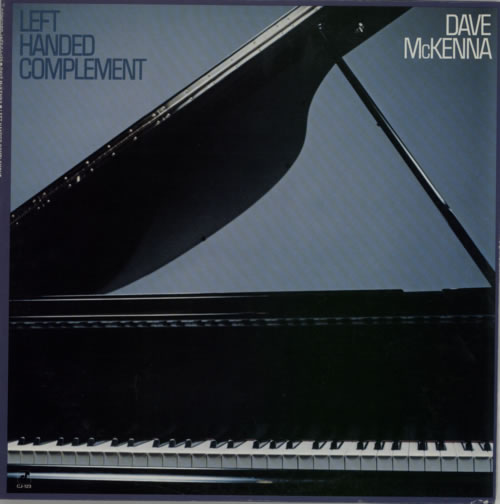Good Study and Listening Resources
Dave McKenna
Dave McKenna was the master of left hand walking bass. Check out his Maybeck Recital Hall recording if you want to be completely blown away: Dave McKenna CD's
"Ray Brown's Bass Method"
Learn walking bass from the master of walking bass himself. I have this book and no only is it a great way to get some very nice walking bass lines down, it's a nice book for piano technique as well- play the bass lines in both hands, together. Get a copy: Sheet Music Plus, Amazon
"Ray Brown - Legendary Jazz Bassist"
Don't have time to transcribe bass lines yourself? This is a super hip book of Ray Brown transcriptions as played on recordings. Get a copy: Sheet Music Plus, Amazon
Walking a bass line with the left hand is a skill every jazz, rock, and pop pianist should know. The wonderful thing about it is that walking a basic bass line is not all that difficult once you learn a few simple steps.
Intervalic Bass Lines
The "intervalic" bass line is created from your knowledge of what notes make particular chords. The rules are very simple:
- Start the bass line on the root of the chord
- Play one chord tone per beat until the last beat of the measure or chord
- On the last beat, play a passing tone to the root of the next chord
Let's begin the examples with a basic 2-5-1 chord that you mastered in Lesson 1.
Next, here is an example of F blues with an intervalic style bass line.
Scales and Bass Lines
The next kind of bass line is a "scale" style bass line. The rules are very similar to the intervalic style, however it is your knowledge of how scales interact with chords instead of actual chord notes that build the bass line.
- Start on the root of the chord
- Play a note of the scale that is related to the chord or tonality of the chords you are dealing with until the last beat of the chord
- On the last beat of the chord, play a passing tone to the root of the next chord
The first example is another 2-5-1 chord.
The next example is F blues with a mix of Scale and Interval style bass lines. A good blend of both styles of walking bass lines is what you would normally play in jazz. There are two choruses in the midi file for this one. The second chorus is not printed out, but you can listen to it and hear some of the principles of walking a bass line.
Fingerings
The right fingerings will let you play fast and clean, the wrong fingerings will hold you back. How do you know if you're playing the right fingerings? Easy. Does it feel good? Is your hand moving naturally? If so, then you're probably using the right fingerings. If on the other hand you find that your fingers are getting twisted up and your hand is jumping from note to note, then you need to work on your fingerings.
The best way to work on fingerings is to master your scales with the proper fingerings. There are a lot of free online resources on how to play scales. Check them out.
Here are just a couple fingering rules for scales that might (or might not depending on the situation!) help.
- The Bb is almost always play with the 4th finger of the right hand.
- The Bb is almost always played with the 2nd finger of the left hand.
If you keep these in mind, it could help with the rest of your fingers being in the right position for walking bass and anything else your'e playing.
Right Hand Soloing While Walking A Bass Line
A lot of people ask me about this and say that it's too difficult, how should they practice.
Like anything else, start simple! I recommend starting with simple 2-5-1 bass lines and playing VERY simple in the right hand. Let the left hand do the work, play less in the right hand, simple rhythmic stuff. Practice 2-5-1 bass lines in all keys. Then move on to the blues.
If you want to hear a guy who really does this well, look for Dave McKenna recordings. I think he Maybeck Recital hall recording has him jamming on walking piano bass for most of his songs.
If I'm not back in 24 hours, call the president.
Scot is available for skype jazz piano lessons (and google hangouts, phone call, etc...)
Use the contact link at the top of the page.





